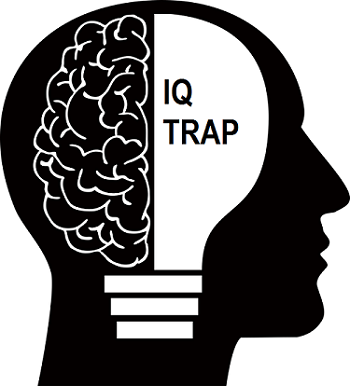Everyone agrees that Quinn is extremely bright; he’s a naturally inquisitive kid who speaks eloquently and is quick to offer creative ideas in the classroom. The gifted-and-talented teacher is certain Quinn would add an engaging voice and imaginative flair to the project her group is working on — but he never gets the chance.
Instead, Quinn is seated with the remedial group, where his inventiveness has no outlet. Frequently bored and frustrated by too-easy tasks, Quinn often becomes restless, and is penalized for being disruptive — all because his test scores don’t reflect his obvious intellect.
This all-too-common scenario is what we at the Gilchrist Institute for the Achievement Sciences call the IQ trap: When we accept a too-narrow definition of intelligence, we get an incomplete picture of the child’s true potential. Today’s academic testing measures only on a handful of components of intelligence, such as IQ and emotional intelligence — when in fact, we’ve discovered there are many more.
This helps to explain a familiar phenomenon: We’ve all known someone with a high IQ who was a star student, but never managed to achieve similar success beyond the classroom. And sometimes dropouts become multimillionaires. How is this possible? The answer is that different individuals excel at different parts of what we call Natural Thinking and Intelligence (NaTI). And while everyone possesses all of these innate abilities, most of them go unrecognized — and very few people have learned how to develop them all to their full potential.
Through our research at the Gilchrist Institute, we’ve discovered that a person’s potential for success is actually determined by a combination of 13 Natural Intelligences, which are grouped into three categories: Creative, Organizational and Functional.
Creative Intelligence
Our friend Quinn possesses exceptional Creative Intelligence — he’s artistic, imaginative and an inventive problem solver. But too often in a classroom setting, a kid like Quinn is far more likely to be called a “day dreamer” than a “good student.” Kids with strong Creative Intelligence may find it challenging to sit still and connect with lessons presented in a lecture format, and today’s standardized tests fail to measure Creative Intelligence.
Yet we know this powerful component of intelligence can fuel astonishing successes beyond the classroom walls. For proof, we need look no further than history; two familiar “failures” whose Creative Intelligence propelled them to greatness were Albert Einstein and Thomas Edison.
Organizational Intelligence
Kids with strong Organizational Intelligence thrive in a structured environment. They have an unusually well-developed capacity to see the big picture; everything is part of something, and these children possess an internal drive to put things in their place.
Superficial lessons don’t suffice for kids for whom Organizational Intelligence is dominant; they find it difficult to understand concepts that are disconnected from the larger picture. For this reason, they may not perform well by traditional academic measures.
It’s easy to recognize a child with strong Organizational Intelligence — she’s the one who is always asking “Why?” She may insist on running the show, whether the other kids appreciate being bossed around or not. But, she’s very adaptable.
Functional Intelligence
Kids whose strength is their Functional Intelligence are considered “smart” in the traditional sense of the word. They’re emotionally intelligent, and excel at demonstrating knowledge, which is easily measured by academic tests. Consistently high scores and positive feedback in the classroom boost their confidence, so these self-assured students are unafraid to take action.
But those high scores can be deceptive, because they’re an incomplete measure of intelligence; they reflect learned facts, rather than deep understanding. Functional Intelligence is an important component of NaTI, but for these students to become truly successful outside of the classroom, they need the right support to develop their Creative and Organizational Intelligences.
Maximizing Potential
The greatest achievements are always accomplished by a combination of these three categories of intelligence. Most often, this means multiple people contribute different strengths; Creatives come up with the big idea; the Organizationals know how to break down that vision into an actionable plan; and the Functionals are the ones who get out there and make it happen.
To date, it’s been quite rare for one individual to excel in all three areas — but our program is making it possible.
Each of the 13 Intelligences within these three categories represents untapped potential. At the Gilchrist Institute, we work to identify and develop each of these strengths, creating the necessary balance to promote success, and unlocking the potential that can propels individuals to unimagined new heights.
For parents whose kids possess non-traditional intelligence, the trickiest part is also the most rewarding: Keep your focus on this broad definition of success — and don’t fall into the IQ trap.


